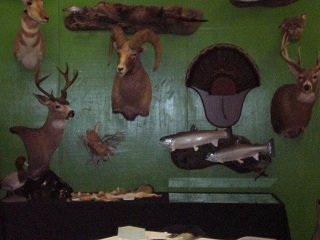 A taxidermist’s shop is a magical place to be. Here is where your trophy will be made into a permanent reminder of your experience. Unfortunately, the taxidermy shop can also be a depressing place where high hopes are dead on arrival and dreams of getting something ‘mounted’ are shattered due to poor planning and the poor handling of a specimen.
A taxidermist’s shop is a magical place to be. Here is where your trophy will be made into a permanent reminder of your experience. Unfortunately, the taxidermy shop can also be a depressing place where high hopes are dead on arrival and dreams of getting something ‘mounted’ are shattered due to poor planning and the poor handling of a specimen.
As a taxidermist of twenty plus years, I want to share the two most important nuggets of knowledge that every hunter should know about: skinning and bacteria.
First, learn how to properly skin your animal cape all the way to the head. For most shoulder mount purposes, the cape should be considered the skin from the middle of the animal’s body to its head. Once most animal capes are skinned all the way to the head, and the head is removed with the cape hanging from it, that specimen is now safer as it can be put into a freezer or walk in cooler. Cold will hinder bacteria growth.
Skinning your animal for meat is not the same as skinning for the taxidermist. The best place to learn this is at the taxidermist’s shop. Stop by during the slow summer season and politely ask all the questions you can muster. Any good taxidermist will be glad to help you. It is not only ethical to assist someone, but it helps the taxidermist in the long run as well. For example, they will show you how to not cut through the arm pits and how to follow hair patterns with your blade. Also, your taxidermist will show you how long to cut a cape. It’s difficult to stretch a skin for a good shoulder mount if there is not enough there.
Secondly, the enemy of all dead things is bacteria. Bacteria break every once-living cell. When a specimen begins to rot, one of the first signs of damage is something called ‘slipping.’ ‘Slipping’ is the loss of hair. Once this happens, saving the cape is technically impossible. The most common cause of bacteria growth is heat and moisture. Moisture is bad, but heat is the most destructive. The best thing to do is get your trophy cooled as soon as possible.
There is a certain cringe worthy statement that has been passed down through the generations that should never be spoken by any hunter, and that is, “a good taxidermist can fix anything.” I am here to tell you that is not true. When a crying hunter gets the bad news that his cape is probably too butchered to save, or missing half its hair; yet he miraculously gets a perfect mount back, the taxidermist probably just replaced the cape. A good taxidermist can only fix so much.
It is up to the hunter to learn proper skinning techniques and how to avoid the enemy called bacteria.








